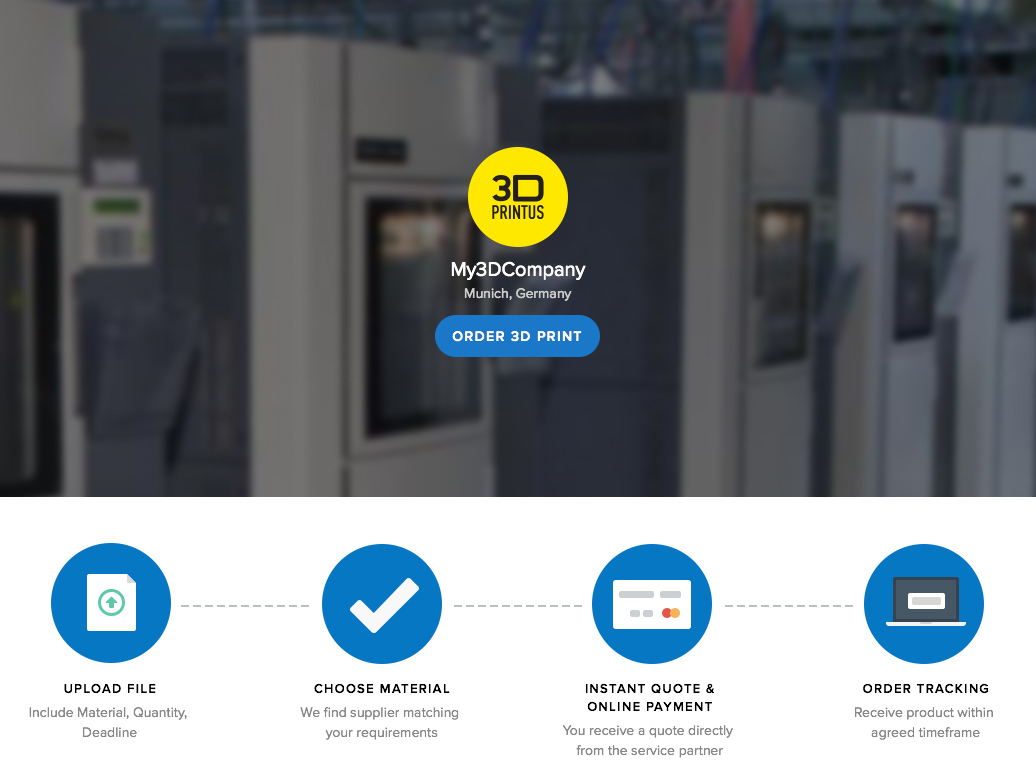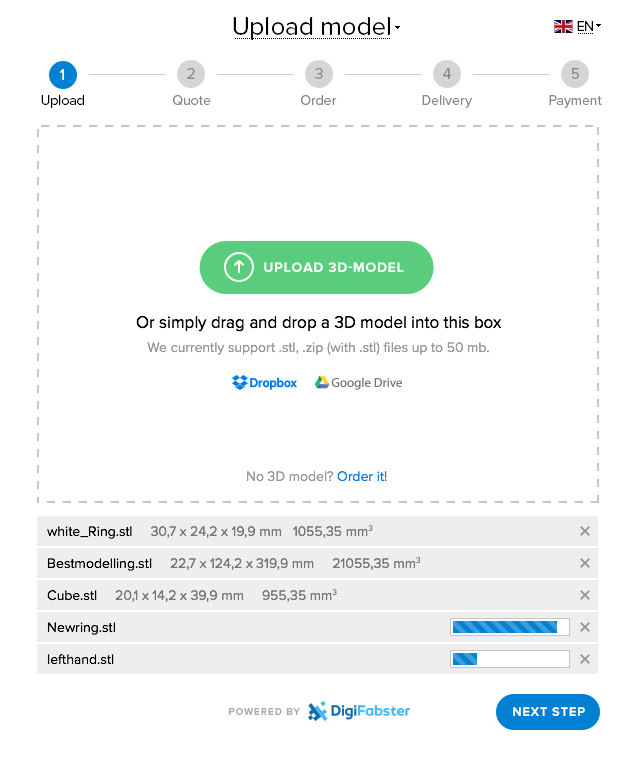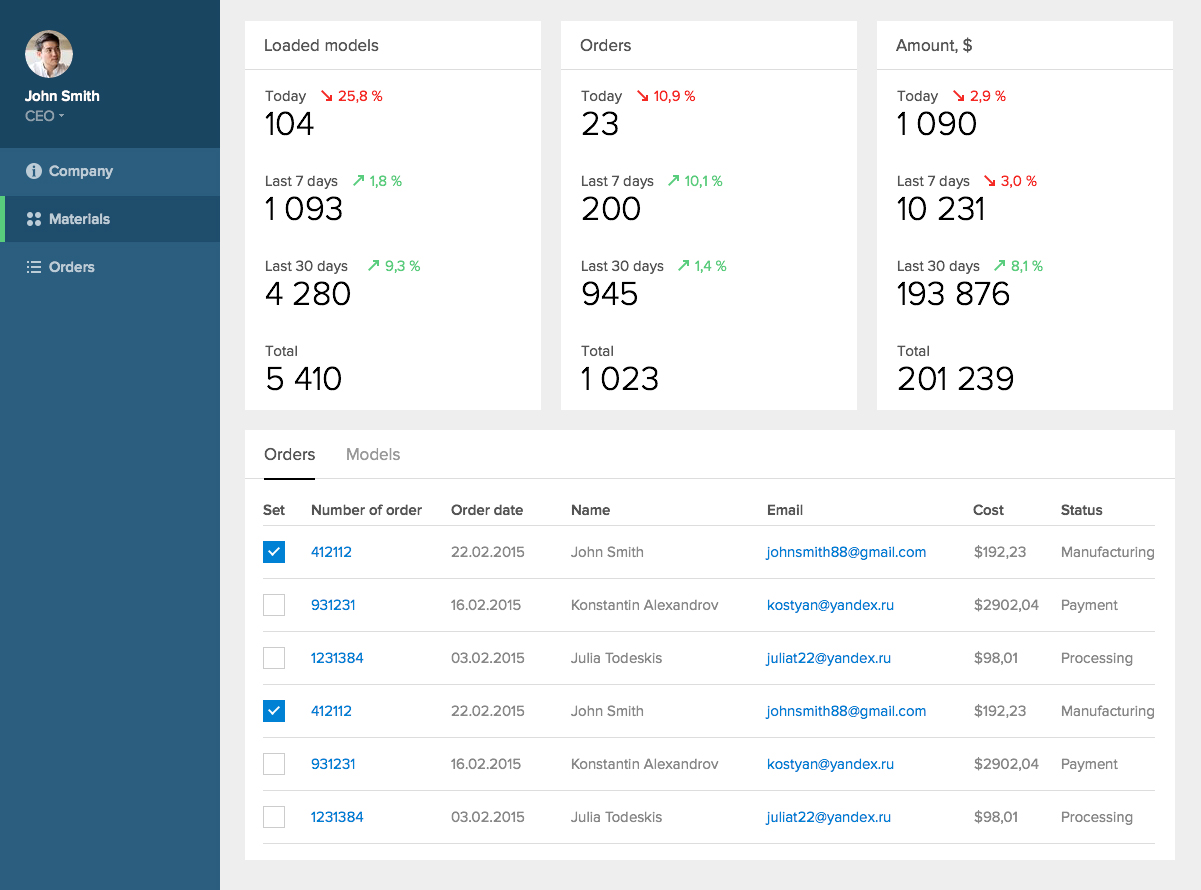While most Fabbaloo readers will be consumers of 3D print services, did you ever wonder how things work behind the scenes at a 3D print service provider?
It turns out it isn’t always pretty and DigiFabster hopes to solve provider issues by offering a comprehensive service to simplify the back office workflow of any 3D print service.
And you don’t have to be a commercial 3D print service: DigiFabster’s solution is useful for any organization that receives requests for 3D prints. This could include a school, makerspace, fablab, research center or in-house print services operation.
For those considering launching a small 3D print service, we’d provide a caution: it’s a lot harder than you might think. DigiFabster has a video that illustrates some of the issues encountered by 3D print services above. According to DigiFabster, they include:
- Handling potentially hundreds of customer calls, emails and requests
- Typically 90% of 3D print requests include 3D models that are unsuitable for 3D printing; these must be detected and resolved
- Typically half of your time is spent computing pricing for client requests and dealing with client interactions
- Apparently only 20-30% of client requests actually manifest a profitable order for your print service; the rest you actually lose money
To rectify some of these issues, DigiFabster has implemented a cloud-based service that incorporates a lot of the required workflow for handling customer requests, uploading (and repair) of 3D model files and more. Currently their service securely supports FDM (plastic extrusion), SLS and Color 3D printing requests.
A key element of DigiFabster’s solution is a pricing service that can compute an appropriate fee for a given 3D model with specified print parameters. DigiFabster provides a web widget to interface with this service that can be placed on a website for immediate customer interactions. DigiFabster also can process credit card requests to complete orders.
The work pile generated by the incoming customer requests is also managed and can be used to deploy print jobs to your printer farm.
Apparently DigiFabster has a number of 3D print service clients across the world today, so their solution appears viable. But what does it cost?
DigiFabster has two pricing models: Free or Platinum.
The Free level actually isn’t free; DigiFabster takes 7% of each completed 3D print request, plus card processing fees. This may seem like a lot to some, but really it’s just a matter of raising your prices by 7% to compensate. The free service, however, has a limit of 1,000 uploads per month.
The Platinum level costs USD$200 per month and is intended for serious, higher-volume print services. DigiFabster will also charge 5% per completed print request, plus card processing fees, but the number of uploads is unlimited.
The Platinum level also permits “white labelling”, in which DigiFabster identification is removed and can be replaced with your own service’s branding.
New in 2016 is DigiFabster’s “Marketplace”. It’s a fascinating service that makes life a lot better for service providers, but is entirely invisible to service users. Basically, in the case where a 3D print service is overloaded, DigiFabster can shunt jobs to other suppliers who may have capacity to take on your overflow work. Similarly, others may refer their overflow work to your farm. DigiFabster’s Constantine Ivanov explains:
Our customers (owners of 3d print services) will have an access to another “capacity’s” of all Digifabster users. So when end-user come to, for example, My3DCompany website, where Digifabster was installed, My3DCompany owner/manager could provide not only their own material/services but also “outsourced capacity’s” from DigiFabster network.
For example, some 3d print service with 10 FDM printers provide only ABS/PLA materials. But they have neighbourhood (or not) service, which provide nylon materials from SLS printer. With DigiFabster internal marketplace they could provide all materials for end-users and reduce churn rate of clients and increase conversion.
We will work not only with digifasbter clients, but also with services with API (like shapeways, materialise, sculpteo).
We’re not aware of any similar back office marketplace like this, and it could prove quite powerful, by making each 3D print service leverage others. It’s even theoretically possible to start a 3D print service without having any 3D printers of your own!
If you are considering launching or already operate your own 3D print service, small or large, you might want to consider using DigiFabster as the back office workflow engine. It could vastly simplify your operations. An easy way for companies to connect with them is to find them at this year’s Consumer Electronics Show in booth #72819, where they will be among the 70+ 3D Print companies participating.
Via DigiFabster





